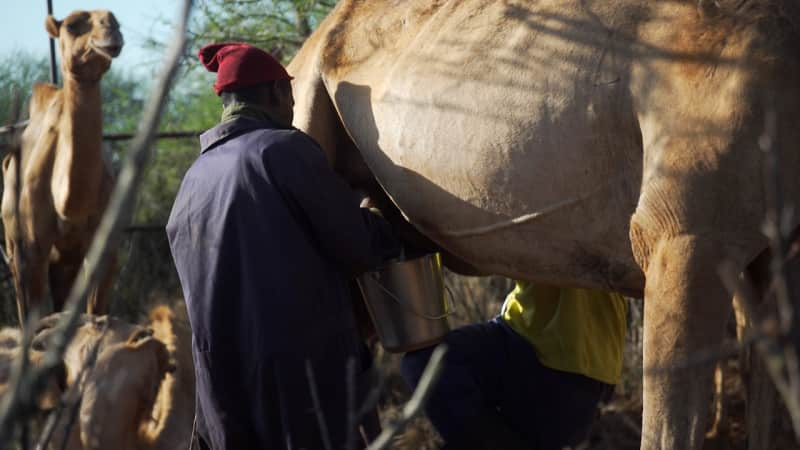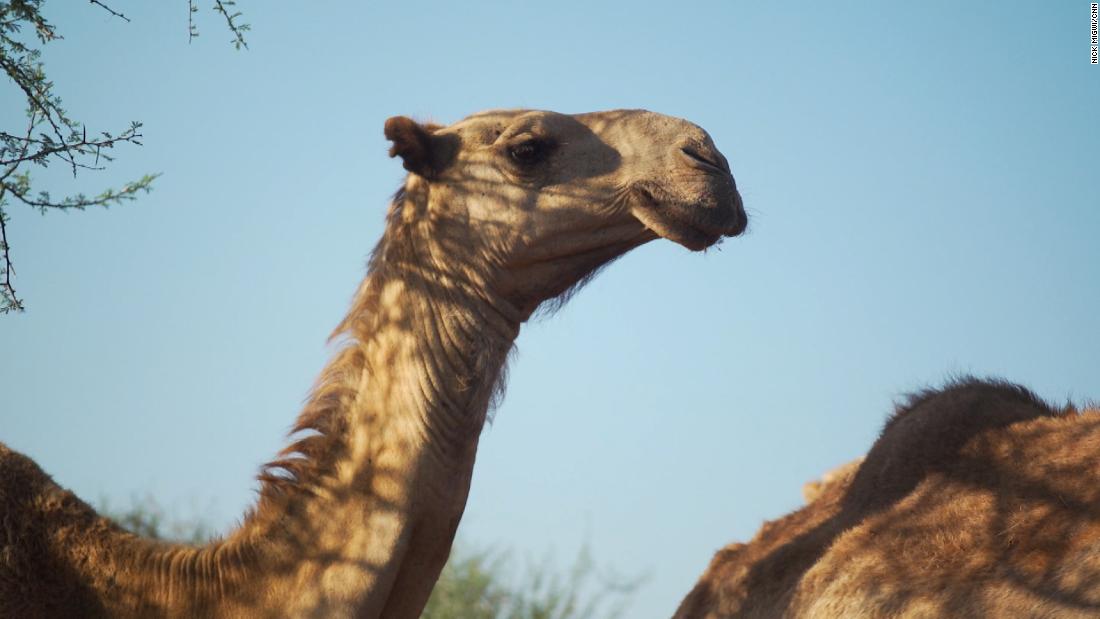At CJ’s Restaurant, a popular café in downtown Nairobi, manager Omar Shariff has noticed a shift. Where demand for camel milk in the past had largely been driven by the local Somali community who grew up with it, today more and more customers are requesting it.
Now, his menu features drinks such as “camel-ccinos” and “camelattes,” with plans to introduce camel products beyond beverages, such as a camel burger.
Though camel milk is consumed across the world in other regions — including much of the Middle East, parts of Asia and Australia — its popularity in East Africa has largely stayed within rural groups. But wider interest both regionally and globally has begun to grow, with prices leading some to dub the milk “white gold.”
Tapping into an abundant source
Though a longtime daily staple for some in the region, the beverage lacks an organized and widespread route to market. Instead, the milk is most often found in informal markets around the country.
From yogurt to “camel-ccinos,” Kenyan farmers are looking to formalize the sector and bring this superfood to the masses.
Even without a formalized supply chain, the sector contributes 10-12 billion Kenyan shillings ($90-108 million) annually to the country’s economy, says Khalif Abey of the Kenya Camel Association.
For one of East Africa’s largest camel milk producers, White Gold Camel Milk, the opportunities for growth are apparent. The company produces 500 liters of milk a day, with company CEO Jama Warsame noting local demand has led the company to diversify into other value-added products like flavored camel’s milk and yogurt.
The appeal of adaptation
With large parts of eastern Africa continuing to weather longer and more intense bouts of drought, camels have also emerged as a climate-friendly alternative source of food.

Camels are able to continue producing milk even when precious resources like rain are hard to come by.
Nick Migwi/CNN
Beyond climate considerations, Shariff says a growing clientele of health-conscious consumers have pushed establishments like CJ’s Restaurant to serve the milk.
“We’ve got several people from gym instructors to health nutritionists saying they’ve found a lot of interesting facts about the camel milk and it’s benefits,” he says.
Getting over the hump
While the potential markets for growth exist, a number of challenges continue to hinder camel milk’s expansion in Kenya. Limited roads and a lack of infrastructure and cold storage prevent large-scale production and delivery of the dairy.

To expand the sector, the camel milk industry in Kenya is pushing for a more formal value chain.
Nick Migwi/CNN
“Where most of the ranchers live, it’s a harsh environment. We have to invest in refrigerated trucks. We have to invest in making a center for collection,” says Warsame.
For a sector built on a network of small family farms, developing the industry to export to profitable markets abroad also presents other hurdles.
“It’s very hard to comply with international standards of disease management and control in a multitude of smallholder-produced milk markets,” notes Hewett.
Despite the challenges, industry leaders are pushing for a formal value chain to be established. With proper infrastructure, the Kenya Camel Association says the sector could be worth an estimated $200 million annually and impact 10 to 12 million households in northern Kenya whose livelihoods rely on these animals.
